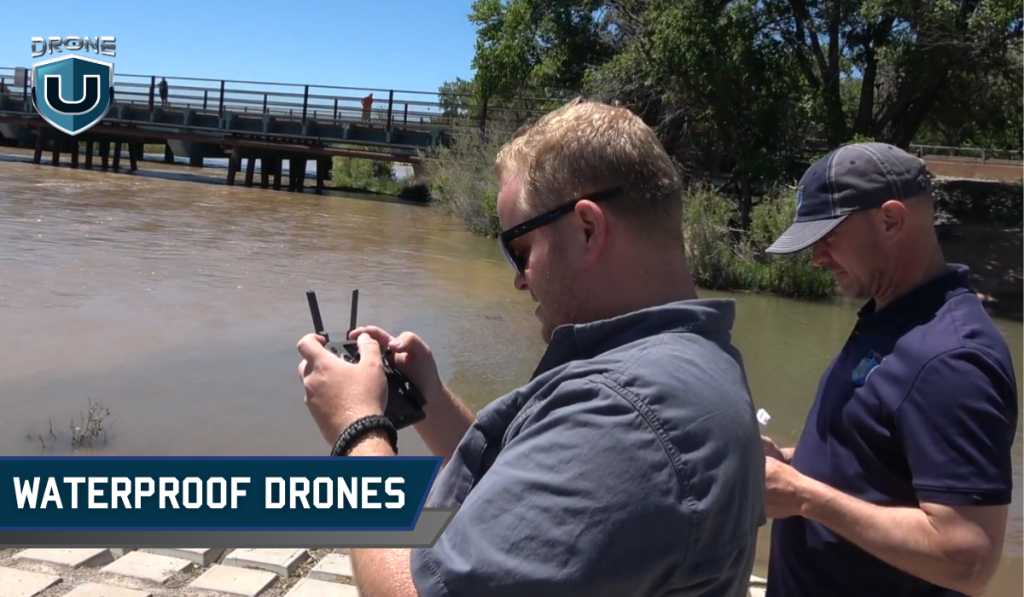
Are you interested in capturing breathtaking aerial shots of waterfalls or discovering underwater wonders? With the rise of waterproof drones, these awe-inspiring captures are no longer just a fantasy.
Traditional drones are not designed to withstand exposure to water, which can lead to costly damage or even complete failure. However, waterproof drones open a whole new world of aerial and aquatic possibilities.
These drones are equipped with robust waterproof housings and seals, ensuring they can withstand splashes, rain, and even brief submersion without compromising their functionality.
In this article, we will introduce you to the best waterproof drones available in 2024. We’ve thoroughly researched and evaluated these drones based on their waterproof ratings, camera quality, flight time, and overall performance.
Let’s get started.
What Makes a Drone Waterproof?
Waterproof drones achieve their water resistance through a combination of design features and materials.
The IP rating system indicates a drone’s level of protection against dust and water. For most waterproof drones, an IP67 rating or higher is recommended. This signifies the drone can withstand sustained water immersion.
Here’s a breakdown of the key elements:
1. Sealing and Gaskets
Similar to how your smartphone might be water-resistant, waterproof drones utilize tight seals and gaskets around critical components like the battery compartment, motor housings, and camera gimbal. These seals prevent water from entering and causing electrical shorts or damage.
2. Corrosion-Resistant Materials
Instead of traditional metals that can rust, waterproof drones often use lightweight and corrosion-resistant materials like high-grade plastics, composites, and treated metals. These materials can withstand exposure to water, salt water, and even humidity without degrading.
3. Coating Techniques
For added protection, some manufacturers apply a conformal coating to the drone’s electronics. This thin, transparent layer acts as a barrier, repelling water and moisture that could potentially damage delicate circuit boards and components.
4. Drainage Holes
While water resistance is crucial, it’s not always about complete water exclusion. Some drones have strategically placed drainage holes that allow water to escape after a splash or landing on water. This prevents water from accumulating and potentially causing issues.
5. Motor Design
Waterproof drones often utilize specially sealed motors to prevent water from entering and shorting the electrical components. In some cases, hydrophobic coatings may be applied to repel water from the motor windings.
Apart from all these, streamlined shapes with minimal openings help minimize water ingress. Also, features like upward-facing air intakes can help prevent water from being sucked into the motors during takeoff and landing.
Choosing the Perfect Waterproof Drone
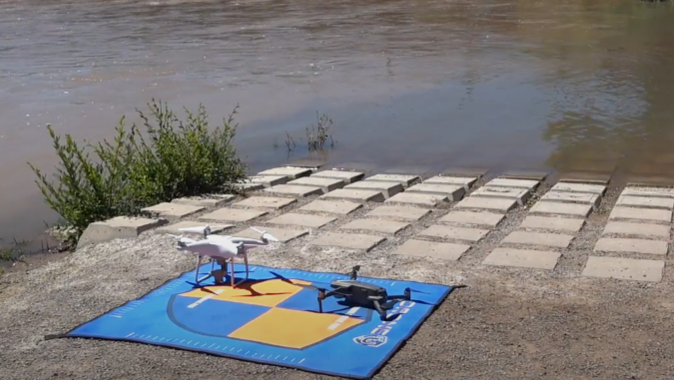
With so many waterproof drones available, it can be challenging to choose one that meets your needs. Here are the key factors to consider:
1. Camera Quality
To capture breathtaking visuals, prioritize a drone with a high-resolution camera. Look for models that capture 4K or even 6K footage, ensuring crisp details in both photos and videos. Gimbal stabilization is equally important. This integrated system compensates for shakes and vibrations, delivering smooth and cinematic footage even in windy conditions.
2. Flight Time & Range
Choose a drone that offers a decent flight duration, allowing you ample time to explore and capture your desired footage.
Range is another important factor. It is the distance your drone can travel from the controller. A longer range provides greater freedom in exploring vast landscapes or venturing further out over water.
3. Durability & Waterproofing
Check the IP rating, which indicates the level of water resistance. Generally, an IP67 rating or higher is recommended, signifying the drone can withstand sustained water immersion.
Look for a drone with a robust construction that can handle minor bumps and potential landings on uneven terrain. Corrosion-resistant materials are also a plus, especially for saltwater environments.
4. Ease of Use & Control
A user-friendly drone makes your adventures more enjoyable. Consider your piloting experience. Drones designed for beginners generally offer intuitive controls and flight modes. More advanced options may provide greater control customization for experienced pilots.
5. Additional Features (Payload Capacity, AI Features)
Some waterproof drones boast additional features that enhance their capabilities. Payload capacity allows you to carry additional equipment.
AI features, like obstacle avoidance or automated flight paths, can simplify piloting and add an extra layer of safety.
That being said, let us find out which drones pass these criteria and come out as a true winner.
Top 4 Contenders for Best Waterproof Drones
Here’s a breakdown of the top contenders categorized by their strengths:
1. SwellPRO SplashDrone 4
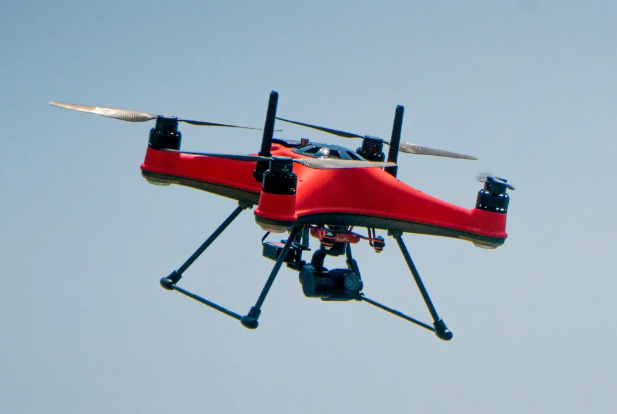 Source: SwellPRO
Source: SwellPRO
The SwellPRO Splashhdrone 4 stands out for its exceptional camera quality and impressive durability. Boasting a 1/2.3-inch CMOS sensor capable of capturing stunning 4K HDR footage, it delivers professional-grade results. The integrated gimbal ensures smooth stabilization, even in windy conditions. Built with a corrosion-resistant body and a waterproof design, this drone is built to withstand the elements, making it a reliable companion for demanding aerial adventures.
Specifications:
- Waterproof Rating: IP67
- Drone Weight: 2.18 kg
- Max Flight Time: 30 mins
- Max Flight Distance: 5 km
- Working Temperature: -10? ~ 40?
- Satellite Positioning Systems: GPS/GLONASS
Pros:
- Exceptional camera quality with 4K HDR recording
- Integrated 3-axis gimbal for smooth, stable footage
- Long flight time and impressive range
- Durable construction and IP67 waterproofing
- Multiple intelligent flight modes for hassle-free operation
Cons:
- Higher price point compared to some competitors
- Relatively heavy compared to some compact options
Best For: Professional videographers, photographers, and experienced drone pilots seeking exceptional image quality and performance.
2. SwellPRO Fisherman Drone FD1
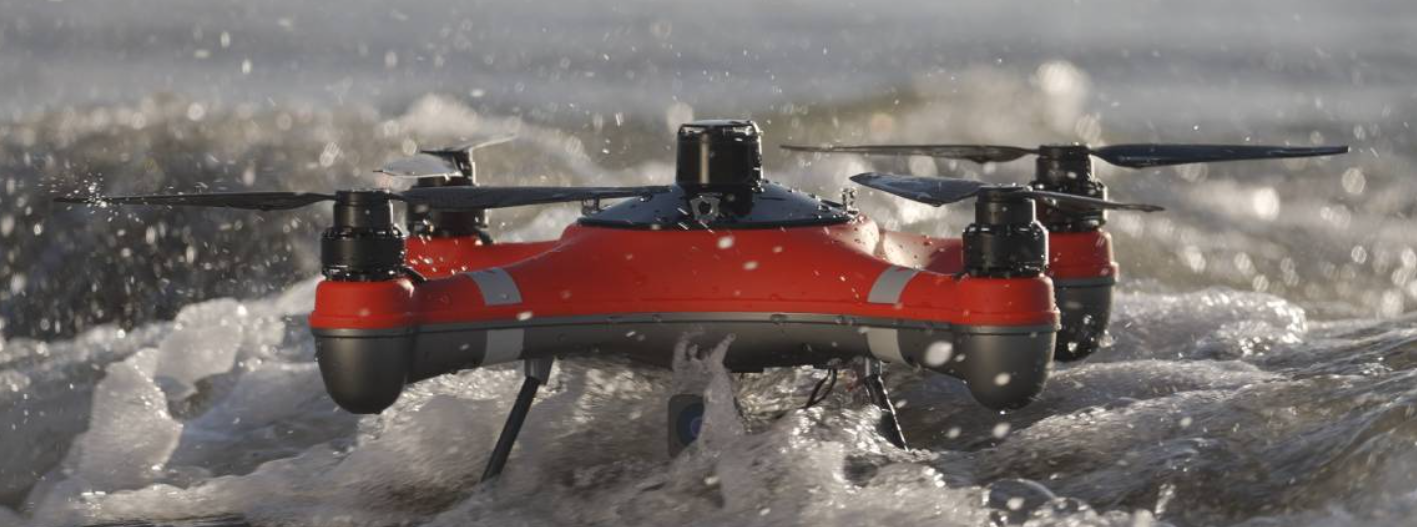 Source: SwellPRO
Source: SwellPRO
For fishing enthusiasts, the SwellPRO Fisherman Drone FD1 is a dream come true. This feature-packed drone boasts a unique payload capacity, allowing you to carry your fishing bait or line directly to your target spot. The integrated bait release mechanism ensures precise delivery, while the high-resolution camera helps you locate fish with ease. The rugged construction and waterproof design make the FD1 ideal for handling the challenges of saltwater environments.
Specifications:
- Waterproof Rating: IP67
- Drone Weight: 2050g
- Max Flight Time: 28 mins
- Working Temperature: -10? ~ 40?
- Satellite Positioning Systems: GPS/GLONASS
Pros:
- Specifically designed for fishing with a dedicated payload capacity for bait or fishing line
- Integrated bait release mechanism for precise delivery
- High-resolution camera helps locate fish with ease
- Durable construction and IP67 waterproofing for saltwater environments
- User-friendly controls and flight modes
Cons:
- Camera gimbal stabilization is not as advanced as some high-end options
- Slightly shorter flight time compared to some competitors
Best For: Fishing enthusiasts, and anglers looking for a drone specifically designed to enhance their fishing experience.
3. PowerVision PowerDolphin
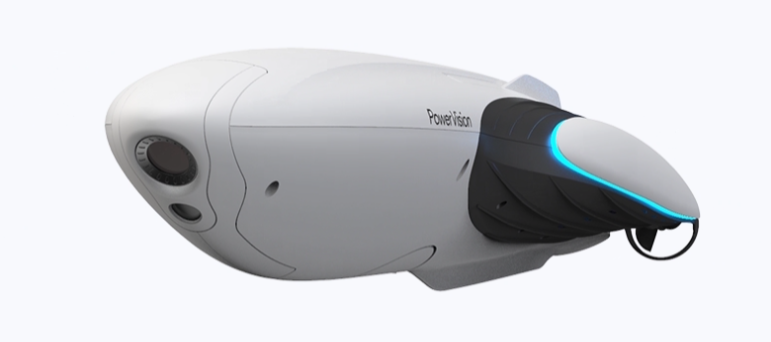 Source: PowerVision
Source: PowerVision
If exploring the surface of the water is your passion, the PowerVision PowerDolphin is a compelling choice. This innovative drone is designed specifically for surface exploration, featuring a unique catamaran hull that provides exceptional stability and maneuverability. The 4K camera captures stunning footage of the water’s surface, while the integrated sonar allows you to see what lies beneath.
Specifications:
- Weight: 2267 grams
- Waterproof Rating: IPX8
- Sensor: 1/2.3 inch CMOS
- Operating Temperature Range: 32°F – 104°F
- Sonar Technology: Integrated sonar for underwater object detection
Pros:
- Unique catamaran hull design for excellent stability on water
- 4K camera captures stunning surface footage
- Integrated sonar helps locate fish and underwater objects
- Long battery life for extended surface exploration
- Relatively user-friendly controls
Cons:
- Camera doesn’t offer the same level of gimbal stabilization as some aerial drones
- Not ideal for deep-underwater exploration
Best For: Recreational boaters, fishermen, and water sports enthusiasts looking for a stable platform to capture surface footage and explore underwater environments.
4. PowerVision PowerEgg X Wizard
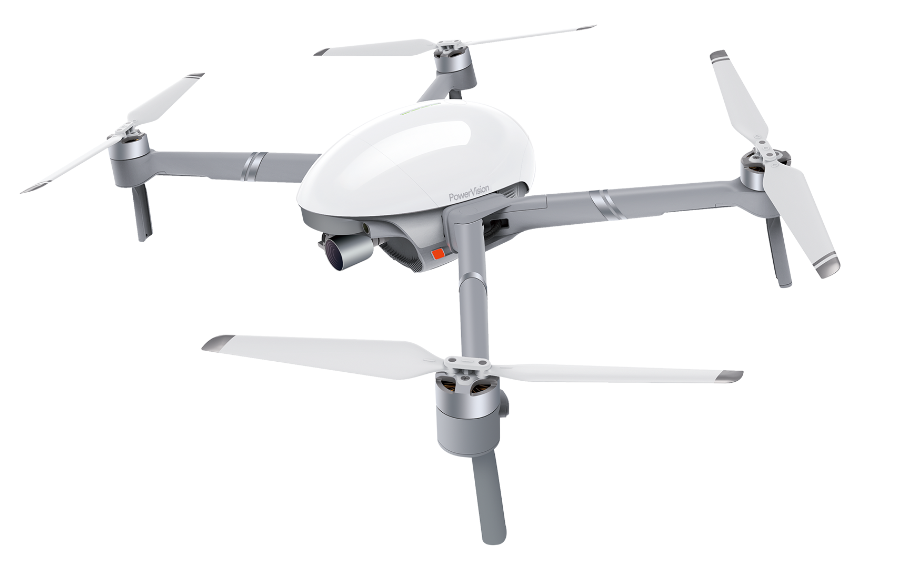 Source: PowerVision
Source: PowerVision
This versatile PowerVision drone combines a waterproof aerial drone with a handheld gimbal camera, offering a unique two-in-one solution for capturing stunning footage from both the air and ground. The Wizard package specifically includes a full waterproof kit that allows the drone to fly in rain and even take off and land on water. This makes it suitable for capturing footage in challenging weather conditions or over water bodies.
Specifications:
- Weight: 544 grams
- Camera: 1/2.8 inch CMOS Effective Pixels 12MP+
- Gimbal: 3-axis mechanical gimbal
- Flight Time: Up to 30 minutes
- Waterproofing: can fly in the rain and take off and land on water with waterproof accessories.
Pros:
- Waterproof aerial drone and handheld gimbal camera
- Detachable camera allows for interchangeable lenses, including a waterproof option
- 3-axis gimbal for smooth footage in both aerial and handheld modes
- Long flight time and impressive range (aerial mode)
- Compact and portable design
Cons:
- Requires purchasing the separate waterproof camera lens for underwater operation
- May not be as durable as some dedicated waterproof drones
Best For: Content creators, travelers, and adventurers seeking a versatile drone for capturing footage from both air and ground.
So Which Waterproof Drone is Right For You?
Here is a quick comparison table to help you determine the winner.
| Model | Camera | Flight Time | Waterproofing | Price |
| SwellPRO SplashDrone 4 | 4K (Waterproof) | 30 minutes | IP67 | $2,498 |
| SwellPRO Fisherman Drone FD1 | 720 px | 28 minutes | IP67 | $1,147 |
| PowerVision PowerDolphin | 4K UHD | 20 minutes | IPX8 | $500 |
| PowerVision PowerEgg X Wizard | 4K UHD | 30 minutes | Available in All-Weather and Wizard Combo | $600 |
Frequently Asked Questions
1. Can waterproof drones be submerged?
It depends on the specific waterproof drone and its IP rating. While waterproof drones are designed to handle water exposure, not all are created equal for submersion.
Submersible drones are specifically designed to operate underwater. They typically boast a higher IP rating (IP68 or higher), indicating they can withstand complete and continuous submersion for extended periods. Examples include the CHASING Dory, designed for deep underwater exploration.
2. How long do waterproof drones last?
With proper care, a well-maintained waterproof drone can last for several years (3-5 years or more).
3. Are waterproof drones more expensive?
Generally, yes, waterproof drones tend to be more expensive than their non-waterproof counterparts. Waterproof drones require additional engineering considerations to ensure water resistance. Sealing techniques, corrosion-resistant materials, and specialized motor designs all contribute to the increased cost.







Add Your Comment